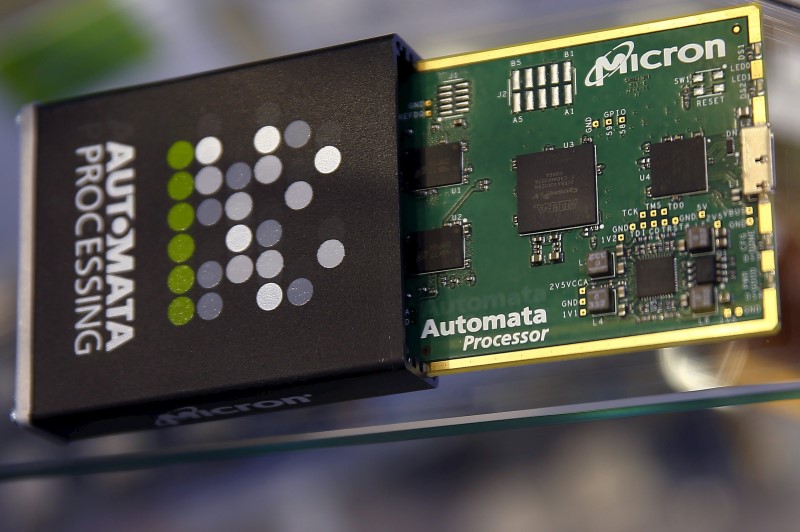Street Calls of the Week
Investing.com -- Micron (NASDAQ:MU) shares jumped around 4% in premarket trading Tuesday after Nvidia (NASDAQ:NVDA) CEO Jensen Huang revealed that the company is supplying memory chips for Nvidia’s new graphics processing units (GPUs)
During his presentation on Nvidia’s new GeForce RTX 50 Blackwell gaming chips, Huang highlighted Micron as a key provider of memory for the GPUs.
Anticipation had been building ahead of Huang’s keynote on Monday night, with investors eager to hear updates not only on Nvidia’s latest developments but also on the company’s potential to drive further momentum in the semiconductor sector.
The excitement pushed chip stocks higher during Monday’s regular trading, with Micron gaining 10.5%.
Mentions from Nvidia executives have previously given stock prices a boost. For instance, during last year’s GTC event, Huang highlighted Dell Technologies (NYSE:DELL) as a key partner, and in a recent earnings call, Nvidia management referenced Super Micro Computer (NASDAQ:SMCI) as a partner, which helped ease concerns about the server maker’s business relationships amid accounting uncertainties.
Micron has an existing partnership with Nvidia, and investor interest in recent quarters has grown around high-bandwidth memory (HBM), which is becoming increasingly important in AI hardware.
As for Nvidia, Huang reassured investors by confirming that Blackwell is fully in production and that “every single cloud service provider now has systems up and running.” Blackwell is Nvidia’s newest chip family, and Huang announced that three additional Blackwell systems are already in production, complementing the Grace Blackwell NVLink72.
According to the keynote, Nvidia’s RTX 50-series chips will feature DLSS 4, an AI-powered technology designed to improve gaming frame rates. The chips will enhance character detail and deliver better graphics and higher resolution overall.
While Nvidia’s gaming division continues to grow, with a 15% year-over-year revenue increase last quarter, the company’s data center sales have surged, doubling for six consecutive quarters and surpassing $30 billion in the latest period.
Nvidia highlights that the new chips are optimized for AI models and computer graphics, extending beyond gaming. For example, their processing power will allow game developers to incorporate generative AI into in-game characters.
